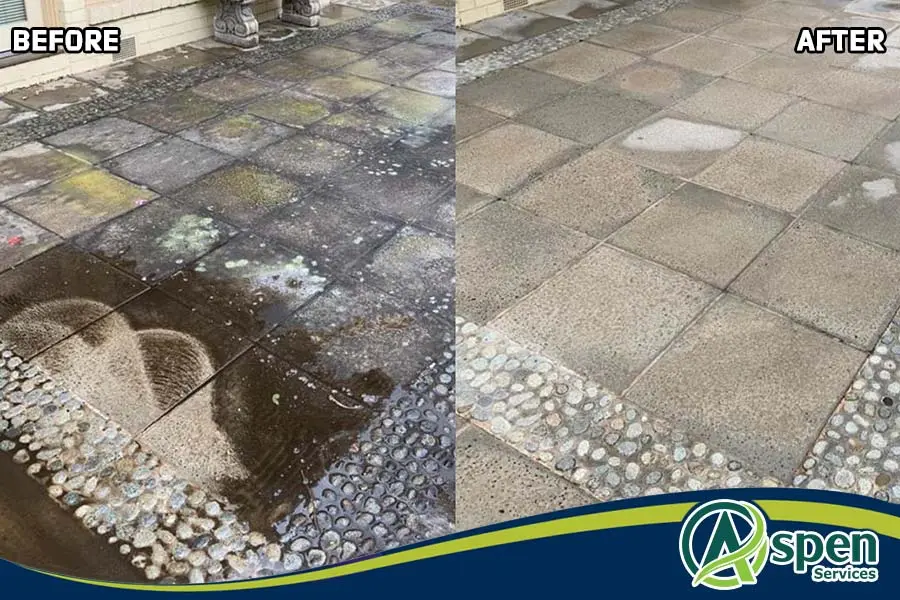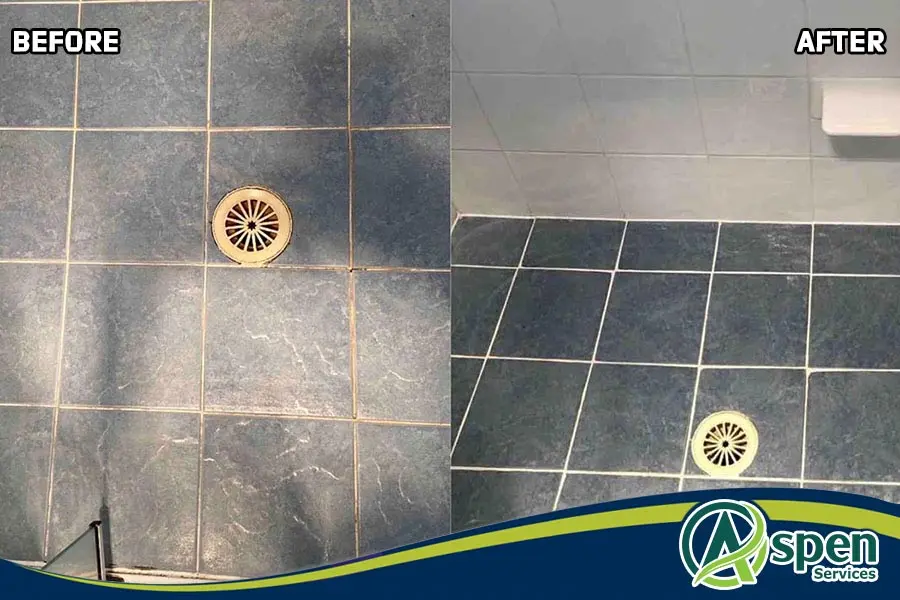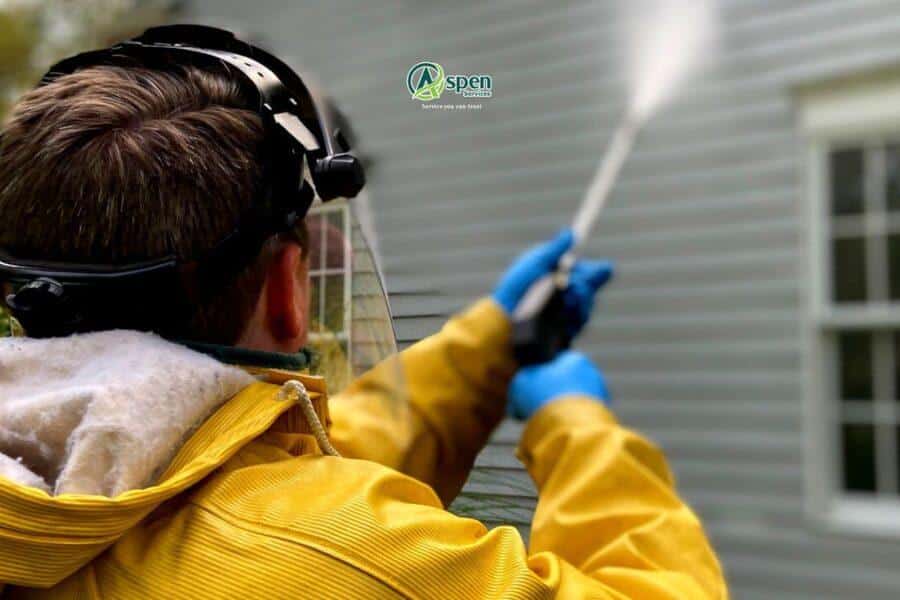Are you tired of looking at a dirty and dull patio? Do you want to transform your outdoor space into a sparkling haven? Look no further, because this is the ultimate guide to patio cleaning. In this article, we will share with you an array of expert tips and tricks that will help you achieve a spotless patio that you can be proud of.
Cleaning your patio may seem like a daunting task, but with the right guidance, it can be a breeze. We will walk you through the step-by-step process of cleaning different types of patios, including concrete, stone, and wood. From removing stubborn stains and algae to tackling moss and mold, we have got you covered.
Discover the best patio cleaning solutions, tools, and techniques that will make your patio look as good as new. Whether you have a small balcony or a spacious patio, our guide will provide you with the knowledge and confidence to take on this cleaning project.
Say goodbye to dirt, grime, and unsightly marks on your patio. Get ready to create a stunning outdoor space that you can enjoy all year round. Let’s get started with our ultimate guide to patio cleaning!
Why is patio cleaning important?
A clean patio not only enhances the overall appearance of your outdoor space but also ensures its longevity. Over time, dirt, grime, and other debris can accumulate on your patio, causing it to look dull and uninviting. Additionally, these buildups can lead to the growth of moss, algae, and mold, which can be slippery and hazardous.
Regular patio cleaning not only improves the aesthetic appeal of your outdoor space but also helps prevent accidents and damage. By removing dirt, stains, and organic growth, you can ensure the longevity of your patio materials and keep them looking their best for years to come.
Tools and equipment needed for patio cleaning
Before you dive into cleaning your patio, it’s essential to gather the right tools and equipment. Here are some items you’ll need to make the cleaning process easier and more efficient:
- Broom or brush: A sturdy broom or brush with stiff bristles will help you remove loose debris and dirt from the surface of your patio. Opt for a broom with an adjustable handle to reach all areas effectively.
- Pressure washer: If your patio is particularly dirty or has stubborn stains, a pressure washer can be a game-changer. It uses high-pressure water to blast away dirt, grime, and even mold or moss. Make sure to use the appropriate pressure setting for your patio material to avoid damage.
- Scrub brush: For tough stains and hard-to-reach areas, a scrub brush will come in handy. Choose a brush with stiff bristles that can effectively scrub away dirt and grime without damaging the surface.
- Garden hose: A garden hose with a nozzle attachment will allow you to rinse off cleaning solutions and debris from your patio. Look for a hose with adjustable water pressure to control the flow.
- Cleaning solutions: Depending on the type of stains and the material of your patio, you may need different cleaning solutions. Common options include mild dish soap, vinegar, hydrogen peroxide, or specialized patio cleaners. Always follow the manufacturer’s instructions and test a small area before applying the solution to the entire patio.
Preparing your patio for cleaning
Before you begin the actual cleaning process, it’s essential to prepare your patio to ensure optimal results. Follow these steps to get your patio ready for a thorough cleaning:
- Clear the area: Remove any furniture, planters, or other items from your patio. This will give you a clear workspace and prevent any damage to your belongings during the cleaning process.
- Sweep or brush away loose debris: Use a broom or brush to sweep away any loose dirt, leaves, or debris from the surface of your patio. Pay attention to corners, cracks, and crevices where dirt tends to accumulate.
- Trim plants and vegetation: If you have plants or vegetation near your patio, trim them back to prevent leaves, branches, or flowers from falling onto the surface. This will make the cleaning process easier and reduce the chances of staining.
Now that your patio is clear and ready, it’s time to dive into the step-by-step cleaning process.
Step-by-step guide to cleaning your patio
Cleaning your patio involves several steps to ensure a thorough and effective result. Follow this step-by-step guide to achieve a spotless outdoor space:
- Wet the surface: Use a garden hose or a pressure washer to wet the entire surface of your patio. This will help loosen dirt and make the cleaning process more manageable.
- Apply cleaning solution: Depending on the type of stains and the material of your patio, choose an appropriate cleaning solution. Dilute it according to the instructions and apply it to the surface of your patio, focusing on heavily stained or dirty areas.
- Scrub the surface: Use a scrub brush or a stiff broom to scrub the cleaning solution into the surface of your patio. Pay extra attention to stains, algae, or mold growth. Apply more pressure if necessary but be cautious not to damage the patio material.
- Rinse thoroughly: Once you have scrubbed the entire patio, rinse off the cleaning solution with a garden hose or a pressure washer. Start from one end and work your way across the entire surface, ensuring you remove all traces of the cleaning solution.
- Inspect for remaining stains: After rinsing, inspect the patio for any remaining stains or areas that need additional cleaning. Repeat the cleaning process if necessary, focusing on specific spots that require extra attention.
- Allow to dry: Let your patio air dry completely before moving any furniture or accessories back onto it. This will prevent any dirt or debris from sticking to the surface and ensure a pristine finish.
Congratulations! You have successfully completed the cleaning process for your patio. However, there may still be some tough stains or discoloration that require special attention. Let’s explore some tips for dealing with these stubborn marks.
Tips for removing tough stains and discoloration
Despite your best efforts, some stains or discoloration may prove challenging to remove. Here are some tips and tricks to tackle the most stubborn patio stains:
- Oil and grease stains: Sprinkle cat litter or sawdust over fresh oil or grease stains to absorb the excess. Afterward, scrub the area with a degreasing dish soap and warm water mixture. Rinse thoroughly and repeat if necessary.
- Rust stains: Mix lemon juice or vinegar with salt to form a paste. Apply the paste to the rust stains and let it sit for a few hours. Scrub the area with a brush and rinse thoroughly. Repeat the process if needed.
- Mildew or mold stains: Mix equal parts water and bleach in a spray bottle. Spray the solution onto the affected areas and let it sit for a few minutes. Scrub the stains with a brush and rinse thoroughly. Wear protective gloves and ensure proper ventilation when working with bleach.
Remember to always test any cleaning solution on a small, inconspicuous area of your patio before applying it to the entire surface. This will help you determine if the solution is safe for your patio material and avoid any potential damage.
Preventing future dirt and grime buildup on your patio
Now that your patio is clean and spotless, it’s essential to take preventive measures to avoid future dirt and grime buildup. Here are some tips to keep your patio looking its best:
- Regular sweeping: Make it a habit to sweep your patio regularly to remove loose debris, leaves, and dirt. This will prevent them from settling and causing stains.
- Prompt stain treatment: Address any spills or stains immediately to prevent them from becoming more challenging to remove. Blot or clean up any spills as soon as they occur to minimize the chances of permanent staining.
- Use doormats: Place doormats at the entrances to your patio to reduce the amount of dirt and debris that is tracked onto the surface.
- Seal your patio: If your patio is made of porous materials like concrete or natural stone, consider applying a sealant to protect it from stains and damage. This will make future cleaning easier and prevent dirt from penetrating the surface.
By following these preventive measures, you can maintain a clean and spotless patio throughout the year.
DIY patio cleaning solutions
If you prefer using natural or homemade cleaning solutions, here are a few options to try:
- Vinegar and water: Mix equal parts white vinegar and water in a spray bottle. Spray the solution onto the surface of your patio and let it sit for a few minutes. Scrub the area with a brush and rinse thoroughly.
- Baking soda paste: Mix baking soda with water to form a paste. Apply the paste to stains or heavily soiled areas and let it sit for a few minutes. Scrub with a brush and rinse thoroughly.
- Hydrogen peroxide: Dilute hydrogen peroxide with water and apply it to stained areas. Let it sit for a few minutes, then scrub and rinse thoroughly. This solution is particularly effective for mold or mildew stains.
Remember to test these DIY solutions on a small, inconspicuous area before applying them to the entire patio.
Hiring professional patio cleaning services
If you prefer to leave the patio cleaning to the professionals, hiring a professional patio cleaning service can be a great option. These experts have the knowledge, experience, and specialized equipment to tackle even the toughest patio stains and dirt.
Before hiring a professional service, do thorough research, read reviews, and ask for recommendations from friends or neighbors. Ensure the service provider is licensed, insured, and offers a satisfaction guarantee.
Maintenance and care for a spotless outdoor space
Once your patio is clean and pristine, it’s important to maintain its appearance and extend its lifespan. Here are some maintenance tips to keep your outdoor space looking its best:
- Regular inspection: Regularly inspect your patio for any signs of damage, cracks, or loose pavers. Address any issues promptly to prevent further damage.
- Regular cleaning: Make patio cleaning a part of your regular maintenance routine. Set a schedule to clean your patio at least once or twice a year, depending on the level of dirt and usage.
- Protective covers: Invest in protective covers for your furniture and accessories to shield them from the elements. This will prevent dirt, leaves, and other debris from accumulating on your patio.
- Proper drainage: Ensure your patio has proper drainage to prevent water pooling or damage. Clean out any clogged drains or gutters regularly to maintain optimal drainage.
By following these maintenance and care tips, you can enjoy a spotless outdoor space for years to come.
Conclusion
Congratulations! You have reached the end of our ultimate guide to patio cleaning. We hope you found these tips and tricks helpful in achieving a spotless and inviting outdoor space. Remember, regular cleaning, preventive measures, and proper maintenance are key to keeping your patio looking its best.
Say goodbye to dirt, grime, and unsightly marks on your patio. With the knowledge and confidence gained from this guide, you can create a stunning outdoor space that you can enjoy all year round. Transform your patio into a sparkling haven and bask in the beauty of your spotless outdoor oasis.
Now, it’s time to roll up your sleeves, gather your tools, and get ready to make your patio shine. Happy cleaning!



![11 Benefits of Pressure Cleaning [Updated 2024]](https://aspenservices.com.au/wp-content/uploads/2022/11/HIGH-PRESSURE-CLEANING-11.jpg.webp)






